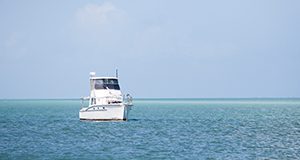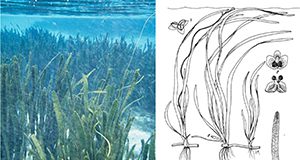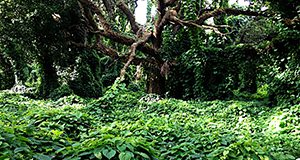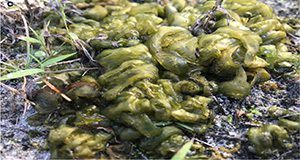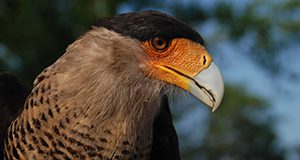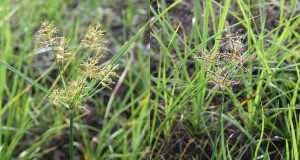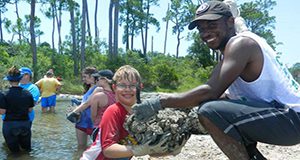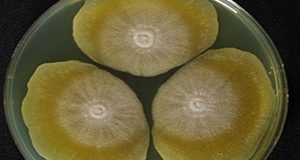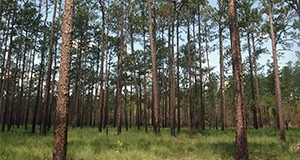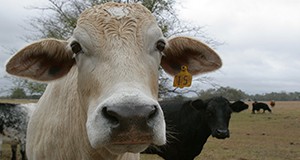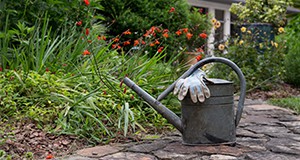This 13-page document is the seventeenth lesson in the Cetaceans 4th Grade Curriculum. It contains information that will help students learn about ways to minimize ship strikes and whale entanglements. Written by Maia Patterson McGuire and Ruth Francis-Floyd, and published by the UF/IFAS Veterinary Medicine–Large Animal Clinical Sciences Department, June 2019.
http://edis.ifas.ufl.edu/vm242
Category: Ecosystems & Species
Cetaceans 4th Grade Curriculum: Lesson 10: Summarizing What We Know about Cetaceans
This 5-page document is the tenth lesson in the Cetaceans 4th Grade Curriculum. It contains information that will help students learn about different types of poetry and write poems to express what they know about whales and dolphins. Written by Maia Patterson McGuire and Ruth Francis-Floyd, and published by the UF/IFAS Veterinary Medicine–Large Animal Clinical Sciences Department, June 2019.
http://edis.ifas.ufl.edu/vm235
Cetaceans 4th Grade Curriculum: Lesson 18: Bringing It All Together
This 6-page document is the eighteenth lesson in the Cetaceans 4th Grade Curriculum. It contains information that will help students develop persuasive essays and corresponding presentations about North Atlantic right whales. Written by Maia Patterson McGuire and Ruth Francis-Floyd, and published by the UF/IFAS Veterinary Medicine–Large Animal Clinical Sciences Department, June 2019.
http://edis.ifas.ufl.edu/vm243
Cetaceans 4th Grade Curriculum: Lesson 15: Technology and North Atlantic Right Whales
This 6-page document is the fifteenth lesson in the Cetaceans 4th Grade Curriculum. It contains information and activities that will help students learn the ways that technology is being used to study North Atlantic right whales. Written by Maia Patterson McGuire and Ruth Francis-Floyd, and published by the UF/IFAS Veterinary Medicine–Large Animal Clinical Sciences Department, June 2019.
http://edis.ifas.ufl.edu/vm240
Cetaceans 4th Grade Curriculum: Lesson 5: Scientific Names: Understanding Where Those Funny Words Come from
This 7-page document is the fifth lesson in the Cetaceans 4th Grade Curriculum. It contains information and activities that will help students interpret the scientific names of certain whales and dolphins. Written by Maia Patterson McGuire and Ruth Francis-Floyd, and published by the UF/IFAS Veterinary Medicine–Large Animal Clinical Sciences Department, June 2019.
http://edis.ifas.ufl.edu/vm230
Tapegrass, Eelgrass, or Wild Celery (Vallisneria americana Michaux): A Native Aquatic and Wetland Plant
This 5-page document describes the main features of tapegrass and summarizes important habitat requirements for its growth and restoration. Written by Mohsen Tootoonchi, Lyn A. Gettys, and Jehangir H. Bhadha, and published by the UF/IFAS Agronomy Department, September 2019.
http://edis.ifas.ufl.edu/ag437
Lost in the Weeds?: A Comprehensive Guide to Florida's Many Non-Native Plant Lists
Because researchers and land managers in Florida have been dealing with invasive species for decades, there is an abundance of resources available to the public regarding invasive species. Sometimes, the volume of available information can be confusing. This 6-page document aims to inform the general public, land managers, researchers, local and state policy makers, and others who seek guidance in accessing regulatory and nonregulatory non-native plant lists in the state of Florida. This publication explains the origins of the lists, meaning of inclusion on a particular list, and ways to access each of the lists. Written by Deah Lieurance and Lyn A. Gettys, and published by the UF/IFAS Agronomy Department, August 2019.
http://edis.ifas.ufl.edu/ag436
The Value of Tropical Plant Diversity
This new 5-page document discusses plant diversity at the UF/IFAS Tropical Research and Education Center, environmental factors and human activities affecting these plants, assemblages of species based on levels of disturbance, human choice, and other factors, and the diverse needs these plants meet. Written by Cliff G. Martin and Zachary T. Brym, and published by the UF/IFAS Agronomy Department, June 2019.
http://edis.ifas.ufl.edu/ag435
Biologia y Manejo de Nostoc (Cyanobacteria) en Viveros y Invernadores
Este artículo es escrito para ayudar el lector a entender la biología y ecología de Nostoc, un género común de cianobacteria (alga verdeazulada) de suelos húmidos, y proporcionar métodos para manejar esta plaga en viveros. This 4-page document is the Spanish version of Biology and Management of Nostoc (Cyanobacteria) in Nurseries and Greenhouses. Written by H. Dail Laughinghouse IV, David E. Berthold, Chris Marble, and Debalina Saha, and published by the UF/IFAS Agronomy Department, April 2019.
http://edis.ifas.ufl.edu/ag432
Wildlife of Florida Factsheet: Northern Crested Caracara
The Wildlife of Florida Factsheet series was created to provide the public with a quick and accurate introduction to Florida’s wildlife, including both native and invasive species. Authors Elizabeth Rose and Raoul Boughton hope this 2-page fact sheet published by the UF/IFAS Department of Wildlife Ecology and Conservation will inspire people to learn more about the northern crested caracara and understand the amazing biodiversity of wildlife in general in the state of Florida and in their own backyards and communities.
http://edis.ifas.ufl.edu/uw452
Biology and Management of Nostoc (Cyanobacteria) in Nurseries and Greenhouses
This new 4-page document provides an overview of the biology and ecology of Nostoc-like cyanobacteria (blue-green algae) in humid soils and discusses cultural, physical, and chemical methods to manage this weed in nursery environments. Written by H. Dail Laughinghouse IV, David E. Berthold, Chris Marble, and Debalina Saha, and published by the UF/IFAS Agronomy Department, February 2019.
http://edis.ifas.ufl.edu/ag430
Biology and Management of Yellow (Cyperus escuelentus) and Purple Nutsedge (C. rotundus) in Ornamental Crop Production and Landscapes
This new six-page document provides insight on characteristics and management techniques for both yellow and purple nutsedge, prevalent and persistent weeds in Florida. Written by Debalina Saha, Chris Marble, Nathan Boyd, and Shawn Steed and published by the UF/IFAS Environmental Horticulture Department, March 2019.
http://edis.ifas.ufl.edu/ep569
Key Plant, Key Pests: Holly (Ilex sp.)
This series of Key Plant, Key Pests publications are designed for Florida gardeners, horticulturalists, and landscape professionals to help identify common pests associated with common Florida flora. This publication, the eighth in the Key Plant, Key Pests series, helps identify the most common pests found on Holly (Ilex sp.). This publication provides information and general management recommendations for Florida wax scale, tea scale, Cylindrocladium leaf spot, dieback, Sphaeropsis gall, root knot nematodes, and magnesium deficiency. This five-page document was written by Juanita Popenoe, Caroline R. Warwick, Jacqueline Bourdon, and Liz Felter and published by the UF/IFAS Department of Environmental Horticulture.
http://edis.ifas.ufl.edu/ep566
A Homeowner’s Guide to the Living Shoreline Permit Exemption Part 1: Florida Department of Environmental Protection
“Living shoreline” is a term that describes coastal shoreline stabilization interventions that rely on natural elements such as native vegetation and oyster reefs to protect property. Living shorelines typically involve construction or placement of materials within state waters (public lands that occur waterward of the mean high tide line). The Florida Department of Environmental Protection and other entities regulate the placement of living shorelines through a permitting process to ensure project activities do not conflict with the public interest. To streamline the approval process for environmentally beneficial projects such as living shorelines, the DEP has defined an exemption for small-scale living shoreline projects that meet certain criteria. This 17-page fact sheet written by Savanna Barry, Sara Martin, and Eric Sparks and published by the UF/IFAS Florida Sea Grant College Program provides a guide to completing the exemption forms.
http://edis.ifas.ufl.edu/sg187
The Southern Pine Beetle Dendroctonus frontalis (Coleoptera: Curculionidae: Scolytinae)
The southern pine beetle, Dendroctonus frontalis Zimmermann, is the most destructive insect pest of pine in the southern United States. This 8-page fact sheet written by Demian F. Gomez and Jiri Hulcr and published by the UF/IFAS Department of Entomology and Nematology describes the beetle and includes advice on how to monitor for them and strategies for their prevention and control.
http://edis.ifas.ufl.edu/in333
Geosmithia Species in Florida: Common Fungal Symbionts of Wood-Boring Bark Beetles
Geosmithia are fungi associated with wood-boring bark beetles. Most Geosmithia species do no harm to host trees, but the canker-causing Geosmithia morbida and its beetle vector, the walnut twig beetle, cause the disease complex known as thousand cankers disease on walnut trees. Continuous surveys in Florida have found neither Geosmithia morbida nor its beetle vector in the state, but many native Geosmithia species have been recovered. These native species look similar to the pathogenic fungus but are harmless to their plant hosts. This 4-page fact sheet written by Yin-Tse Huang and Jiri Hulcr and published by the UF/IFAS School of Forest Resources and Conservation provides basic guidelines to sample Geosmithia species in the field and information for distinguishing the plant pathogenic Geosmithia morbida from other Geosmithia species.
http://edis.ifas.ufl.edu/fr412
Basic Steps to Creating a Conservation Land Trust in Florida
Conservation land trusts, more commonly called land trusts, are private 501(c)(3) nonprofit organizations that protect land important to your community for its natural, cultural, and recreational value. These publicly supported organizations also sustain healthier and more resilient economic development in your community and throughout the state. This 5-page fact sheet written by Benjamin W. North, Elizabeth Frances Pienaar, and Jessica D. Sullivan and published by the UF/IFAS Wildlife Ecology and Conservation Department outlines the basic steps to creating a land trust and provides links to the necessary documents and resources that will assist you in creating a land trust.
http://edis.ifas.ufl.edu/uw448
Antibiotic Use and Resistance for Beef Cattle Producers
Antibiotic-resistant microorganisms cause millions of illnesses and cost billions of dollars in the United States each year. This 5-page fact sheet written by Chad Carr, Matt Hersom, K. C. Jeong, Nicolas DiLorenzo, Jason Scheffler, Victoria Roberts, Gina Faniola, Stephanie Miller, Haley Denney, Nahilia Williams, and Bianca McCracken and published by the UF/IFAS Department of Animal Sciences discusses the use of antibiotics in cattle production operations and answers some common questions about antibiotics and antibiotic-resistant microorganisms.
http://edis.ifas.ufl.edu/an351
Featured Creatures Released November and December 2018
Manual de los Reglamentos del Agua en Florida: Ley del Agua de 2016
La Ley del Agua de la Florida de 2016 es una política de agua integral que aborda los problemas críticos de abastecimiento de agua y calidad de la Florida. Entró en vigor el 1 de julio de 2016. La Ley del Agua de la Florida de 2016 creí la Ley de Protección de Acuíferos y Manantiales de Florida, codificó la Iniciativa de la Florida Central y revisó la Ley de los Everglades y Estuarios del Norte. Written by Michael Olexa, Tatiana Borisova, and Jarrett Davis and published by the UF/IFAS Food and Resource Economics Department.
http://edis.ifas.ufl.edu/fe1046


